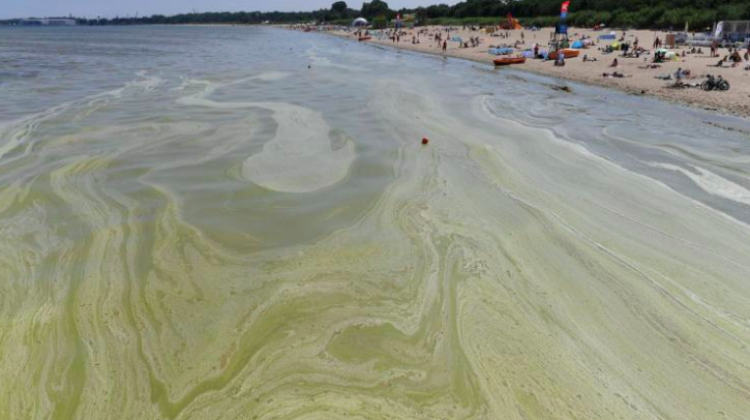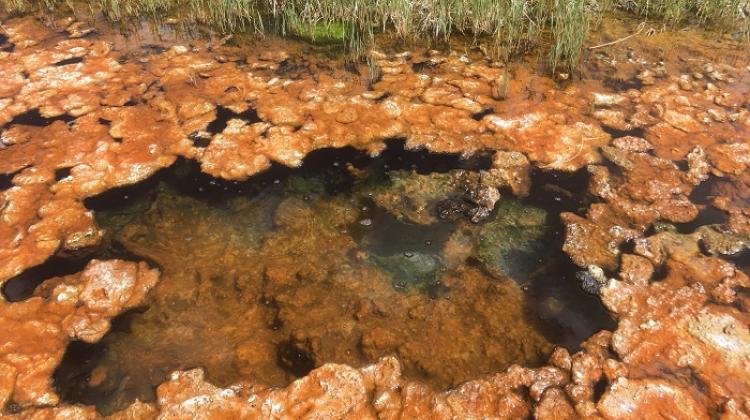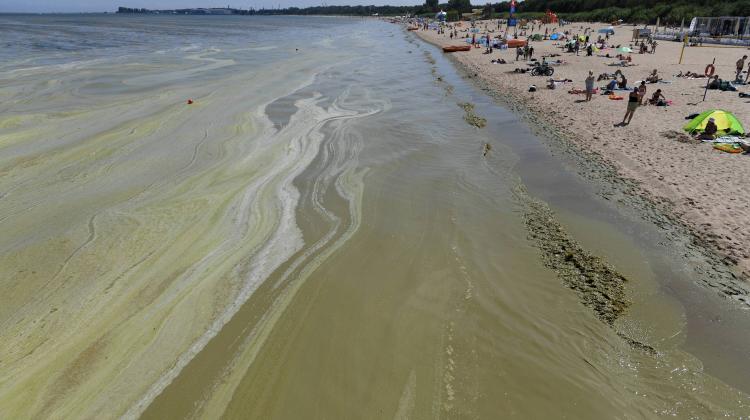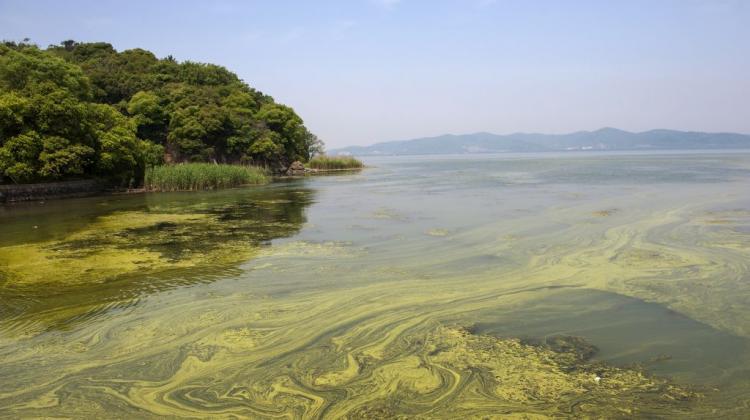Oceanographer: Cyanobacteria can be toxic, but they are not clearly bad for humans
 Photo: PAP/Adam Warżawa 24.07.2018
Photo: PAP/Adam Warżawa 24.07.2018
During intensive propagation, some species of cyanobacteria produce toxins that are harmful to humans and animals. But they are not clearly bad organisms: they produce oxygen, and scientists hope that substances isolated from them will be useful in the treatment of civilization diseases, oceanographer says.
In recent days, some bathing areas on the Baltic Sea have been closed due to the blue-green algae bloom. According to Dr. Agata Błaszczyk from the Institute of Oceanography of the University of Gdańsk, the last bloom with similar strength occurred in 2006. This is due to optimal conditions for the growth of blue-green algae - the temperature has been high since the end of May, and July was very warm compared to previous years.
Asked when we could expect this phenomenon to end, she says: "It all depends on the weather, because the bloom is a dynamic phenomenon. Wind gusts and rainfall or thunderstorms can stop the bloom in a matter of hours" - she adds. But in her opinion, the bloom will continue for a few more days.
Cyanobacteria are simple microorganisms that were once considered plants because they produce oxygen as a result of photosynthesis. However, research has shown that the structure of their cells resembles bacteria. "That is why they are now called cyanobacteria" - says Dr. Błaszczyk.
The researcher reminds that blue-green algae are not unequivocally harmful organisms. "They produce oxygen that we need, and some of the compounds they produce are being tested for future use in medicines to combat civilization diseases, including cancer. We have promising achievements in this area" - she says.
Scientists are actually quite happy about the bloom because it is a great opportunity to collect large quantities of cyanobacteria and study them in the laboratory. "We isolate the compounds we are interested in, which we hope to be able to use in medicine" - she says.
According to Dr. Błaszczyk, blooming cyanobacteria are not always harmful to people. This is the case only for a certain group of species - but even those ones are not dangerous when they are not blooming.
"During the blooms, they are visible in the form of yellow-green spots. In the summer, three species of cyanobacteria bloom at the same time in the Baltic: Nodularia spumigena, Aphanizomenon flosaquae and Dolichospermum spp. But only N. spumigena produces toxins" - says the expert.
Cyanobacteria occur in the Baltic Sea even in water that seems crystal clear. They are scattered, and because they are microorganisms, they can only be seen through a microscope. "But in that time then they are not dangerous for us - they only produce trace amounts of toxins" - the researcher says.
Cyanobacteria multiply rapidly when the water reaches a high temperature - around 18-20 degrees Celsius, and when there are many nitrogen and phosphorus compounds in the water Rivers carry these compounds, originating mainly from agriculture, from arable lands to the Baltic Sea. "Man is to blame for the mass bloom. We contribute to climate change and contamination with chemicals from arable fields" - said the researcher.
Dr Błaszczyk warns that cyanobacteria from the species Nodularia spumigena generate very highly toxic substance - nodularin. "This compound has a destructive effect on the liver - contact with it may lead to gastric disorders - diarrhoea and vomiting. Animal deaths caused by drinking water with cyanobacteria bloom have been recorded" - says Błaszczyk. In her opinion, in addition to bathing, walks on the beach during the blooms are also dangerous to health - the toxin can get into the body through the respiratory tract.
Why do cyanobacteria produce a toxin? There is no clear answer, Błaszczyk says. Perhaps it is a form of protection against other organisms, a signal substance, or a relic of the evolution process.
Cyanobacteria are pioneer organisms - they were among the first organisms to appear on Earth a few billion years ago. Scientists believe that they probably contributed to the formation of an aerobic atmosphere - and thus to the emergence of advanced life forms. Research shows that these microorganisms were present in the Baltic Sea 7 thousand years ago. Cyanobacteria thrive in water - in seas, rivers and lakes. They can also occur in extreme environments: hot springs, deserts, or among the Arctic ice. (PAP)
author: Szymon Zdziebłowski
szz/ ekr/ kap/
tr. RL
Przed dodaniem komentarza prosimy o zapoznanie z Regulaminem forum serwisu Nauka w Polsce.


















